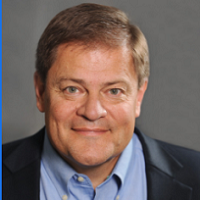 By Richard Watson, MD, Co-Founder, Motient
By Richard Watson, MD, Co-Founder, Motient
Twitter: @Motient_io
Olympic legend Shaun White gave his final snowboarding farewell at the 2022 Beijing Olympics. Despite winning no medals this year, the three-time gold medalist leaves a legacy behind. Still, it is evident how much teammates admire him. His casual, calm, and nice-guy approach to the sport and life itself made him a real favorite to follow. It was palpable to watch as White walked among other boarders, many of whom he has heavily influenced. As for White’s next chapter, it seems to include his snowboard and lifestyle apparel company, Whitespace. Even with my very limited marketing understanding, it is not lost on me — a guy named White, who loves snow, and the creative space outside the lines—it’s very clever!
Growing up with pencils and our trusted Big Chief tablet paper and no white space — where the lines went clear to the edge of the paper and so did our writing—that break from regimented, constrained borders is compelling. It brings to mind a book I remember from the 90s, entitled “Margin,” written by Richard Swenson. Margin, to me, has always signified a difference: a margin of victory, a margin of risk, or a profit margin.
Life is Lived Beyond the Lines
But that was not where Swenson was going with the concept. If our lives were a thin sheet of paper, a significant area would be devoted to the responsibilities of work, family, and the cares of the world. Only a margin would represent that part of our lives outside of the regimented. Those areas of creativity, contemplation, and rejuvenation are places where our brains find the most freedom.
How easy it is to “drag and drop” our margins right to the edge, constraining us to that which is within the lines. But isn’t that exactly what health care has become?
While Healthcare is Trapped Inside the Lines
If healthcare ecosystems were a sheet of paper, the incentives have produced a day-to-day behavior with very little outside of the hearing. Lower inventories, single-source supply chains, and conscripted functionality with little or no flexibility for change have all locked us into a box. The system as a whole has become so ingrained with the very concrete processes that disincentivize any freedom to deal with variation.
It’s as if there wouldn’t be a moment outside of the two standard deviations from the mean. The HHS’s Medical Capacity and Capability Handbook is certainly comprehensive if it is nothing else. Layers on layers of oversight and committees, multiple layers of bureaucracy, and micromanagement. The National Stockpile Plan is similar in its comprehensive nature, but at the same time, allows only three days of medical supplies. Not to mention that the lack of replenishment has pilfered every reserve. It is no wonder that the system has been dangerously lean.
We Have a Chance to Reflect, Re-Evaluate, and Rewrite — Outside the Lines
Health care will soon be emerging from the current wave of the pandemic. It will hopefully be a time of reflection and revaluation.
- Central versus local roles should be examined. With geographic disease variability and seasonal variations taken into account, distinct lines between primary decision and control and that of a supporting function are critical. A one size fits all is insufficient and heavy-handed. Networks for information, supplies, and technology become essential central functions.
Strengthening the public health system is crucial. To become national healthcare’s real infrastructure and resource, the local public health system has to be the leader in resources, day-to-day monitoring, and system preparation. - Incentivizing local and regional supply chain and sourcing. Having these functions locally ensures adequate means that fit the need. Incentives need to be in place to solidify the idea that margin in the system is not waste but is essential to the ability to expand and contract with the need.
- Bio-surveillance is critical to being in front of these global events. Appropriate recognition of the cost of not embracing vigilance in this area is obvious. In that vein, the FDA has a responsibility for emergent pathways for vaccine and drug development. These need to gain the public trust to assure that pharmaceuticals are available in the appropriate quality and quantity and in a safe manner.
A Healthcare System with Room to Grow
The lack of white space in healthcare has been glaringly obvious over the last couple of years. The lack of local and regional control has constrained the actual activity of caring for the people around us. As the balance shifts back to the level of care delivery, the system will be free to meet the demands of any challenge.
This article was originally published on the Motient blog and is republished here with permission.
